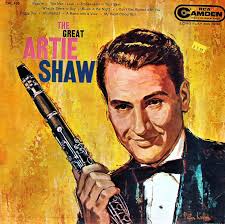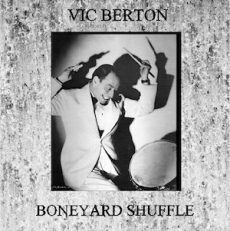
Daily Dose Of Jazz…
Clora Larea Bryant was born on May 30, 1927 in Denison, Texas to Charles and Eulila Bryant, the youngest of three children. As a young child she learned to play piano with her brother Mel, and was a member of a Baptist church choir. Her brother Fred left his trumpet when he joined the military, she picked it up and learned to play. In high school she played trumpet in the marching band.
She turned down scholarships from Oberlin Conservatory and Bennett College to attend Prairie View College in Houston, Texas starting in 1943. Bryant was a member of the Prairie View Co-eds Jazz Band which toured in Texas and performed at the Apollo Theater in New York City in 1944. Her father got a job in Los Angeles, CAlifornia and she transferred to UCLA in 1945, and where she first heard bebop on Central Avenue.
In 1946 she became a member of the International Sweethearts of Rhythm, an all-female jazz band, earned her union card and dropped out of school. Dizzy Gillespie became her mentor and provided her with work. She joined the black female jazz band the Queens of Swing as a drummer, and went on tour with the band.
In 1951 she worked in Los Angeles as a trumpeter for Josephine Baker and Billie Holiday. The same year the Queens of Swing became the first women’s jazz group to appear on television and performed as The Hollywood Sepia Tones. Clora was called onto Ada Leonard’s all-girl orchestra show, however, racist directed calls to the station the engagement. In 1954 she briefly moved to New York because she had lost inspiration from playing in bands.
Bryant recorded her first and only album, Gal With A Horn, in 1957 before returning to the life of a traveling musician. She worked with Louis Armstrong and Harry James, toured with singer Billy Williams and around the world with her brother Mel, had a TV show in Australia and became the first female jazz musician to tour in the Soviet Union after writing to Mikhail Gorbachev.
After a heart attack and quadruple bypass surgery in 1996, Bryant was forced to give up the trumpet but she continued to sing. She also began to give lectures on college campuses about the history of jazz, co-edited a book on jazz history in Los Angeles titled Central Avenue Sounds: Jazz in Los Angeles, and worked with children in Los Angeles elementary schools.
Trumpeter and vocalist Clora Bryant, who was the only female trumpeter to perform with Dizzy Gillespie and Charlie Parker and was a member of the International Sweethearts of Rhythm, died at Cedars-Sinai Medical Center in Los Angeles on August 25, 2019, after suffering a heart attack at home.
More Posts: bandleader,history,instrumental,jazz,music,trumpet,vocal

Daily Dose Of Jazz…
Neil Richard Ardley was born in Wallington, Surrey, England on May 26, 1937. He attended Wallington County Grammar School and at the age of thirteen started learning the piano and later the saxophone. He studied chemistry at Bristol University, also playing both piano and saxophone in jazz groups, graduating in 1959 with a BSc.
Moving to London, England the next year he studied arranging and composing with Ray Premru and Bill Russo. He joined the John Williams Big Band as pianist, arranger and composer, and from 1964 to 1970 was the director of the New Jazz Orchestra. The band employed some of the best young musicians in London, including Ian Carr, Jon Hiseman, Barbara Thompson, Dave Gelly, Mike Gibbs, Don Rendell, and Trevor Tomkins.
The late 1960s saw Ardley begin composing, combining classical and jazz methods. The New Jazz Orchestra 1969 album Le Déjeuner sur l’Herbe is considered a classic of British jazz. It includes arrangements of Nardis by Miles Davis and Naima by John Coltrane, and compositions by young writers associated with the orchestra – including Ardley, Michael Garrick, Mike Gibbs, Howard Riley and Mike Taylor.
His rich orchestrations were augmented in the 1970s by the addition of synthesisers. He began work on an all-electronic album in 1980 which fell through when his recording contract was suddenly terminated, but continued to play and compose, especially with Zyklus, the electronic jazz group he formed with composer John L. Walters, Warren Greveson and Ian Carr.
Neil went on to sing in local choirs in the later 1990s led him to start composing choral music, and to gig and record again with a slimmed down Zyklus consisting of himself, Warren Greaveson, and Nick Robinson
Composer and pianist Neil Ardley, who was an author of popular books on music, died in Bakewell, Derbyshire, England on February 23, 2004.
More Posts: author,composer,history,instrumental,jazz,music,piano

Daily Dose Of Jazz…
Artie Shaw was born Arthur Jacob Arshawsky on May 23, 1910 in New York City to Austrian and Russian Jewish parents Sarah and Harold Arshawsky, a dressmaker and photographer. He grew up in New Haven, Connecticut, where his natural introversion was deepened by local antisemitism. Buying a saxophone by working in a grocery store and began learning the saxophone at 13. At 16, he switched to the clarinet and left home to tour with a band.
From 1925 to 1936 Shaw performed with many bands and orchestras, working in Cleveland, Ohio and establishing a lasting reputation as music director and arranger for an orchestra led by violinist Austin Wylie. Exposed to symphonic music while playing with Irving Aaronson’s Commanders, which he later incorporated in his arrangements. In 1932 he joined the Roger Wolfe Kahn Orchestra and made several recordings. Three years later he gained attention with his “Interlude in B-flat” at a swing concert at the Imperial Theater in New York. During the swing era, his big bands had numerous popular hits with Begin the Beguine, Stardust and others.
In addition to hiring Buddy Rich, he signed Billie Holiday as his band’s vocalist in 1938, becoming the first white band leader to hire a full-time black female singer to tour the segregated South. However, after recording Any Old Time, Holiday left the band due to hostility from Southern audiences, as well as from music company executives who wanted a more mainstream singer.
He fashioned a smaller band within the orchestra in 1940, naming it Artie Shaw and the Gramercy Five after his home telephone exchange. Over time members of the band were pianist Johnny Guarnieri, electric guitarist Al Hendrickson, trumpeter Roy Eldridge succeeded Billy Butterfield, Oran “Hot Lips” Page, Max Kaminsky, Georgie Auld, Dave Tough, Jack Jenney, and Ray Conniff. In 1940, the original Gramercy Five cut eight sides, then Shaw dissolved the band in early 1941.
The long series of musical groups Shaw subsequently formed included Lena Horne, Helen Forrest, Mel Tormé, Buddy Rich, Dave Tough, Barney Kessel, Jimmy Raney, Tal Farlow, Dodo Marmarosa, and Ray Conniff.
Throughout his career, Shaw formed big bands for his radio broadcasts, made several musical shorts for Vitaphone and Paramount Pictures, and played with Navy personnel during World War II. Active until 1954, his music was used in several films, he had numerous talk show appearances, came out of retirement in 1983 and put together one last band.
Clarinetist Artie Shaw, who received a Lifetime Grammy Award in 2004, died on December 30, 2004, aged 94.
More Posts: bandleader,clarinet,history,instrumental,jazz,music

Daily Dose Of Jazz…
Gustave Joseph Viseur was born on May 17, 1915 was born in Lessines, Belgium and because his father was a bargeman, the family moved around a lot until 1920, when they settled in Paris, France. He was given basic instruction in how to play the accordion by his father from the age of eight, then received lessons from a music professor. Father and son played together in an amateur band from 1929. After his father died he began performing on the streets of Paris in fairs and markets.
In the early 1930s, Viseur played second accordion under bandleader Médard Ferrero. In 1933 he met René “Charley” Bazin and the two accordionists started improvising, inspired by hearing jazz. This led to him forming his own band in 1935. It played in a variety of styles and recorded four tunes that year.
Gus was a member of the Boris Sarbek Orchestra, then worked in France and Belgium with Philippe Brun, Joseph Reinhardt, and his own quintet. Together with guitarist Baro Ferret, he added elements of swing to traditional musettes that they played from 1938 and into World War II. He had more public attention after recording L’Accordéoniste with singer Édith Piaf in 1940.
He toured the United States in 1963, then stopped playing and opened a record shop in Le Havre. He started performing again around 1970, and recorded the album Swing Accordéon the following year.
Accordionist Gus Viseur died in Le Havre on August 25, 1974.
More Posts: accordion,bandleader,history,instrumental,jazz,music

Daily Dose Of Jazz…
Vic Berton was born Victor Cohen on May 7, 1896 in Chicago, Illinois. His father was a violinist who began his son on string instruments around age five. He was hired as a percussionist at the Alhambra Theater in Milwaukee, Wisconsin in 1903 when he was only seven years old. By 16, he was playing with the Milwaukee Symphony Orchestra and the Chicago Symphony Orchestra. While serving in World War I he played drums for John Philip Sousa’s Navy band.
In the early 1920s, Berton played in the Chicago bands of Art Kahn, Paul Beise, and Arnold Johnson. He led his own ensemble which played at the Merry Gardens club. 1924 saw him become the manager of The Wolverines, and occasionally played alongside Bix Beiderbecke in the ensemble. Later in the decade, he played with Roger Wolfe Kahn, Don Voorhees, Red Nichols and Paul Whiteman. He worked extensively as a session musicianbefore moving to Los Angeles, California in 1927.
During his time in Los Angeles he played with Abe Lyman and recorded in studios for film soundtracks. Vic served as director of Paramount Films’s music division for a period and worked in the Los Angeles Philharmonic Orchestra. In the 1940s, he worked as a percussionist in the studios for 20th Century Fox.
Drummer Vic Berton died on December 26, 1951 in Hollywood, California from lung cancer.
More Posts: bandleader,drums,history,instrumental,jazz,music


